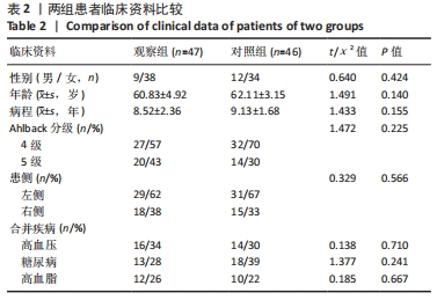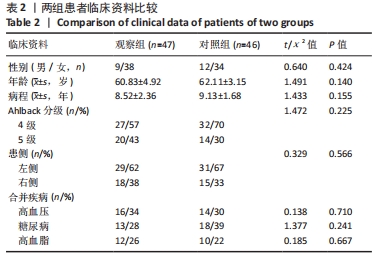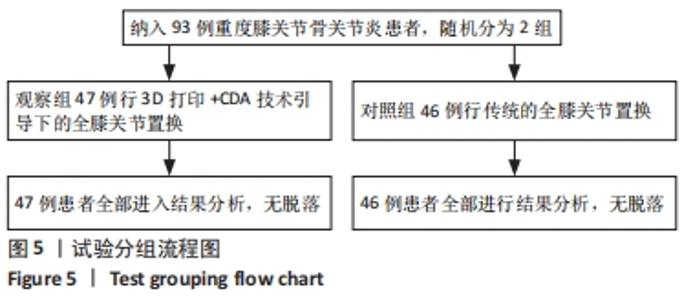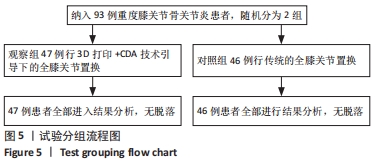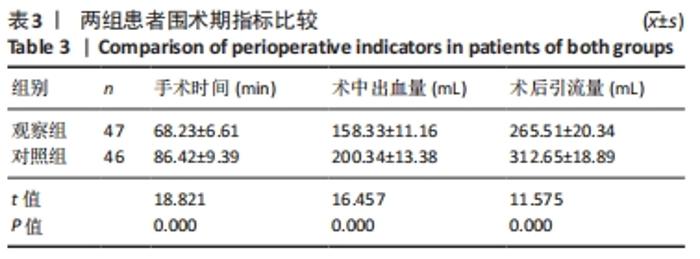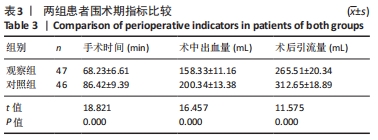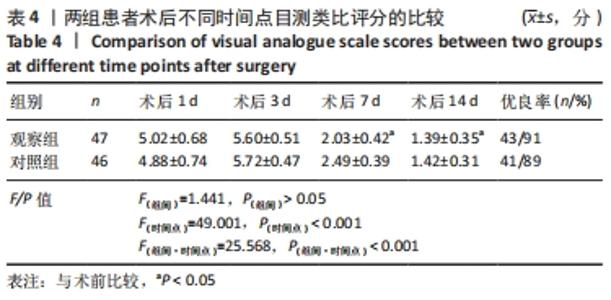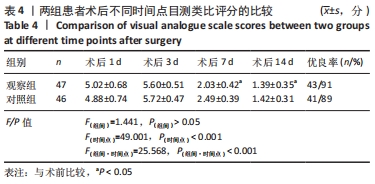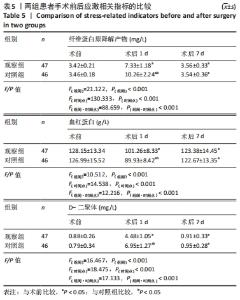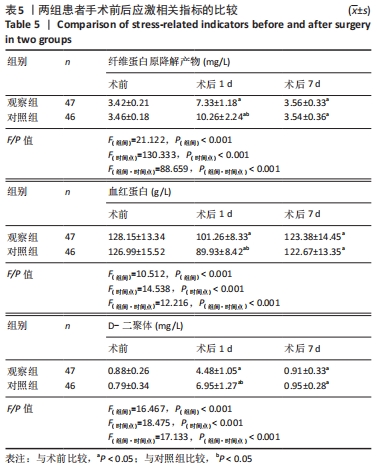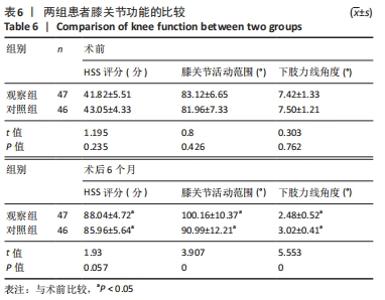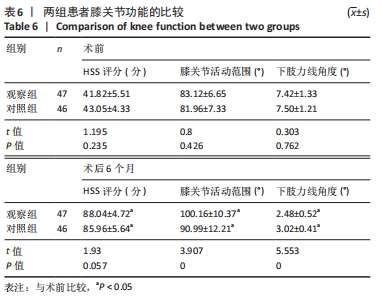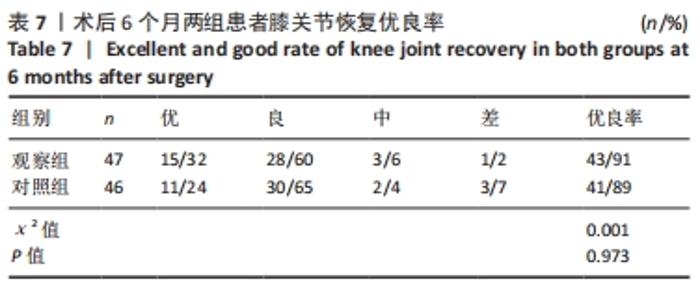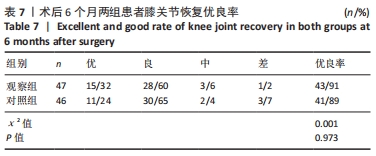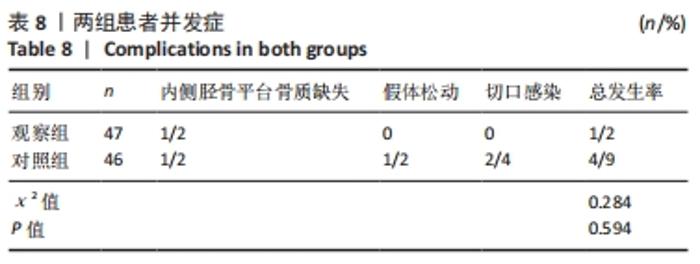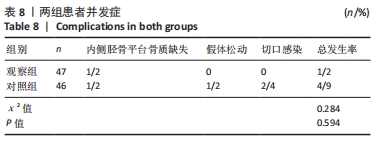[1] 江帆,毛静妍,童雯雯,等.单半径与多半径假体全膝关节置换术治疗重度膝关节骨性关节炎的疗效比较[J].中国骨与关节损伤杂志,2020,35(4):394-396.
[2] PUA YH, POON CL, SEAH FJ, et al. Predicting individual knee range of motion, knee pain, and walking limitation outcomes following total knee arthroplasty. Acta Orthop. 2019;90(2):179-186.
[3] 朱超,王斌,殷建,等.个性化截骨工具辅助下人工全膝关节置换与传统人工全膝关节置换手术精确度及临床疗效比较[J].生物骨科材料与临床研究,2019,16(3):54-58.
[4] 陈华星,袁华兵,彭亚文,等.不同组配式全膝关节假体治疗中重度外翻膝的疗效分析[J].中华关节外科杂志(电子版),2019,13(4): 426-431.
[5] 李杨,耿霄,田华,等.计算机导航系统和3D打印截骨导板对全膝关节置换术失血量的影响[J].中华医学杂志,2020,100(33):2601-2606.
[6] 陈坚锋,冯宗权,李知浩.3D打印定位钉导板在全膝关节置换术中的应用[J].中国矫形外科杂志,2021.29(9):852-855.
[7] 陈孝平,汪建平.外科学[M].8版.北京:人民卫生出版社,2013:783.
[8] 赵平,程加峰,耿家金,等.3种手术方式治疗膝关节内侧间室骨性关节炎早期临床疗效比较[J].皖南医学院学报,2019,38(3):254-257.
[9] 顾新丰,郑昱新,钱齐荣,等.全膝关节置换术治疗膝骨关节炎合并固定性髌骨脱位[J].临床骨科杂志,2020,23(2):262-264.
[10] HOORNTJE A, WITJES S, KOENRAADT KLM, et al. More severe preoperative kellgren-lawrence grades of knee osteoarthritis were partially associated with better postoperative patient-reported outcomes in tka patients. J Knee Surg. 2019;32(3):211-217.
[11] 任志帅,江泽华,张学利,等.重度膝关节骨性关节炎患者首次全膝关节置换术后髋部骨密度变化及其影响因素[J].山东医药, 2019,59(21):64-66.
[12] MEIER M, ZINGDE S, BEST R, et al. High variability of proximal tibial asymmetry and slope:a ct data analysis of 15,807 osteoarthritic knees before tka. Knee Surg Sports Traumatol Arthrosc. 2020;28(4):1105-1112.
[13] BIGGI S, DIVANO S, TEDINO R, et al. Tibial tubercle osteotomy in total knee arthroplasty:midterm results experience of a monocentric study. Joints. 2018;22(2):95-99.
[14] SUERO EM, LUEKE U, STUEBIG T, et al. Computer navigation for total knee arthroplasty achieves better postoperative alignment compared to conventional and patient-specific instrumentation in a low-volume setting. Orthop Traumatol Surg Res. 2018;104(7): 971-975.
[15] 杜辉,张纪,唐浩,等.计算机辅助导航人工膝关节置换手术的效果观察[J].山东医药,2014,54(36):74-77.
[16] 刘云可,李杨,田华,等.3D打印截骨导板辅助全膝关节置换术治疗重度膝骨性关节炎的近期疗效及对围术期失血量的影响[J].中华实用诊断与治疗杂志,2020,34(5):452-455.
[17] EHRENDORFER S, ERDMENGER U, BOCANEGRA LM, et al. Limb and component alignment after total knee arthroplasty comparing 28 consecutive iassist and 28 conventional tkas:a prospective study. Knee. 2020;27(6):1881-1888.
[18] 王跃华,黄永青,周凯,等.UKA术与TKA术对膝关节内侧间室骨关节炎患者膝关节运动功能及炎症因子的影响[J].中国骨与关节损伤杂志,2019,34(8):853-855.
[19] 符得红,戴祝,黎洲,等.TKA术中上移膝关节线获得膝屈伸间隙平衡的临床应用[J].中国骨与关节损伤杂志,2019,34(4):350-353.
[20] 赵潇雄,林源,张博,等.髌骨外侧关节面截骨对全膝关节置换术后膝前痛的影响[J].中华解剖与临床杂志,2020,25(2):135-140.
[21] 王跃辉,邹士平,曹亮亮,等.3D打印截骨导板在膝外翻人工全膝关节置换术中的应用[J].中华创伤骨科杂志,2020,22(10):881-886.
[22] 孙茂淋,杨柳,何锐,等.3D打印导板改善人工全膝关节置换术中股骨旋转对线及髌骨轨迹的疗效研究[J].中国修复重建外科杂志, 2020,34(3):335-340.
[23] BUSH AN, ZIEMBA-DAVIS M, DECKARD ER, et al. An Experienced Surgeon Can Meet or Exceed Robotic Accuracy in Manual Unicompartmental Knee Arthroplasty. J Bone Joint Surg Am. 2019; 101(16):1479-1484.
[24] LEE DY, PARK YJ, HWANG SC, et al. No differences in mid- to long-term outcomes of computer-assisted navigation versus conventional total knee arthroplasty. Knee Surg Sports Traumatol Arthrosc. 2020; 28(10):3183-3192.
[25] SULTAN A, MAHMOOD B, SAMUEL L, et al. Cementless 3D Printed Highly Porous Titanium-Coated Baseplate Total Knee Arthroplasty: Survivorship and Outcomes at 2-Year Minimum Follow-Up. J Knee Surg. 2020;33(3):279-283.
[26] 杨人军,沈泉旭,李建鹏,等.全膝关节置换术后假体周围股骨骨折的诊疗现状[J].中国矫形外科杂志,2020,28(24):2261-2264.
[27] 喻忠,刘帅,顾强荣,等.3D 打印个性化定位截骨导板在人工全膝关节置换术中的精准度研究[J].局解手术学,2018,27(4):255-260.
[28] 陈拥,王增辉,朴成哲.3D打印个性化截骨导板辅助行全膝关节置换的应用[J].中国组织工程研究,2019,23(8):1155-1160.
[29] 沈晔婧,徐晓雯,韩志青,等.肺癌合并静脉血栓栓塞患者围手术期凝血功能变化及高危因素分析[J].临床肺科杂志,2019,24(2): 244-247.
[30] 张艳红,郑山根,张宇,等.血栓弹力图在围手术期骨折患者凝血功能监测中的应用[J].华南国防医学杂志,2020,34(5):306-309,313.
[31] 彭强,王宏,李宣明,等.大剂量氨甲环酸对全膝关节置换患者术后纤溶活性与炎症因子的影响[J]. 现代生物医学进展,2018,18(17): 3319-3322.
[32] 焦甲勋,朱小丽,索娜,等.苦碟子注射液联合低分子肝素预防全膝关节置换术后下肢深静脉血栓形成的临床研究[J].中国新药与临床杂志,2020,39(7):421-424.
[33] CHENG J, FU Z, ZHU J, et al. The predictive value of plasminogen activator inhibitor-1,fibrinogen,and D-dimer for deep venous thrombosis following surgery for traumatic lower limb fracture. Ann Palliat Med. 2020;9(5):3385-3392.
[34] 苗润青,曹力,张晓岗,等.D-二聚体对髋,膝关节置换术后慢性假体周围感染诊断价值的研究[J]. 中华外科杂志,2020,58(6):464-468.
[35] 孙博,王静悦,李冀.氨甲环酸静脉与局部联合用药对全膝关节置换患者围术期纤溶活性与失血量的影响[J].河北医学,2019,25(3): 667-671.
[36] 冯大军,杜桂夏,王金龙,等.3D打印截骨导板技术在人工全膝关节置换术中的应用[J].中国现代手术学杂志,2020,24(2):113-117.
[37] 姬树青.3D打印技术在关节置换方面的应用研究及进展[J].中国医疗器械信息,2020,26(7):36-37+161.
[38] 张军,张利勇,宗永刚,等.3D打印辅助胫骨截骨治疗膝内侧骨关节炎现状[J].中华关节外科杂志(电子版),2019,13(6):750-754.
[39] 牛鸣,马菊蓉,吴旭年,等.3D打印截骨导板辅助下的TKA手术在河西走廊地区的临床应用[J].中国临床解剖学杂志,2019,37(6): 697-703.
[40] 张帆,林家民,马小虎,等.个性化截骨器对全膝关节置换术机械轴偏移及关节功能的影响[J].局解手术学杂志,2019,28(11):874-877.
|
